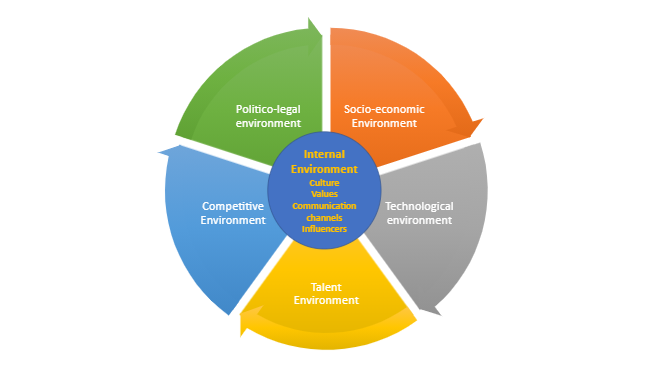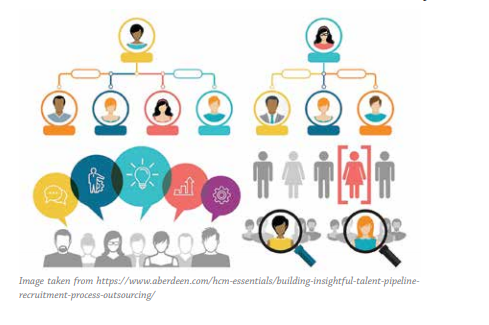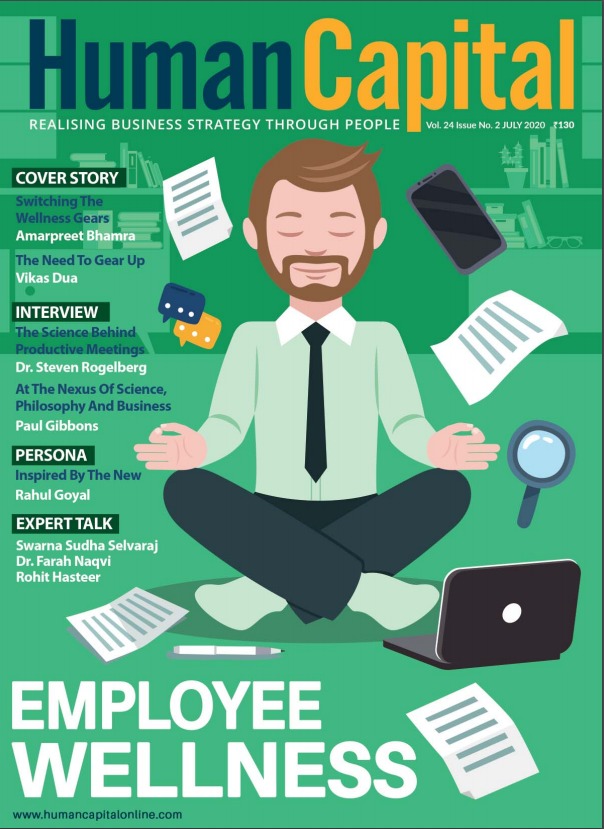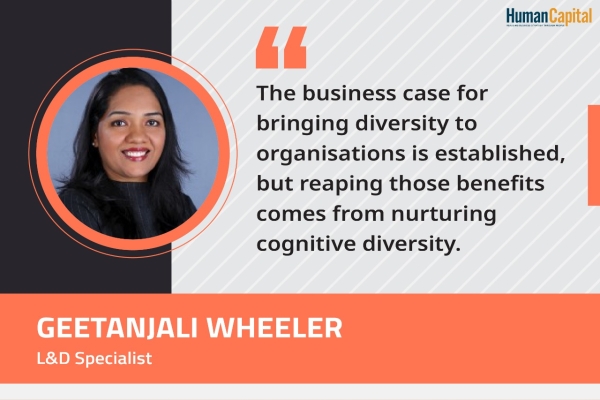Whatever we do touches people and changes what they have been used to. Hence, all HR initiatives should be looked at and managed as Change Management projects.
“Between stimulus and response there is a space. In that space is our power to choose our response. In our response lies our growth and our freedom.” —Viktor E. Frankl
In the past 3 months, one would have come to face with one of the below mentioned scenarios:
• Your Business stakeholder has just returned from an industry conference and she calls you and asks you to do something around Purpose because everyone is talking about it.
• A bright young Management Trainee from your team seeks your time to pitch a project that she wants to do – about Psychological Safety, because that’s what her batchmates are doing in their companies.
You read this amazing article in a journal about revamping Performance Management and you want to implement a new framework across the board. So, what should one do when faced with such a situation:
• Hire a consultant and let them do their thing?
• Hire a bunch of summer trainees to do a project?
• Create a cross-functional team of HiPOs and get them to roll out a programme?
All these are, in fact, good ideas and could work. But, I also despair at the number of initiatives launched by HR teams and prove to be unsuccessful, unsustainable or simply drive employees crazy!
Stop and Think
Therefore, I want to challenge you to not do anything (at least not immediately) – but just stop and think! Think and plan, because well begun is truly half done!
So, what should you think about?
Whether you are thinking of formulating a new policy, launching a new programme or implementing an initiative, the first thing to remember is that all of these are primarily Change Management exercises. Whatever we do touches people and changes what they have been used to. Hence, all HR initiatives should be looked at and managed as Change Management projects. The 3C framework which can make every change initiative Contextual, Comprehensive and Caring must therefore be looked into.
Contextual Design
Just as each individual is unique, no two companies are alike. Therefore, something that worked in a different company at a different time may not work for you at this time. No matter how basic it sounds, it is imperative to remember this every single time – Context is King.
In order to clarify contextual alignment, there are two considerations:
1. The Business context
The industry you operate in, what your competition is doing, and the way in which you are impacted by technical disruptions can all have an impact in determining the course of action for HR. Not every aspect will have an equal impact and some may even be irrelevant, but it is important to have this in the back of your mind as you design any intervention. Apart from external elements, the internal environment of your company such as the alignment to the vision, strategy and values also impact the success of HR initiatives. Hence, certain questions must be answered:
• Industry: Is disruption or high growth underway? Are the market conditions conducive to change – what is the impact of the pandemic or geopolitics?
• Competition: What are competitors doing? What is your employer brand like? How will this initiative impact your brand?
• Company: Does this align with the larger context of the life stage of your company – do you need to consider things like merger/ acquisition, costcutting and hyper-growth? How will your culture enable this change?

2. The Talent Context
Just as you think about the business context, it is extremely important to be sensitive to your talent context. After all, a simple thing like the paternity leave policy may not be exciting for the older generation(s) or something more strategic like a flatter organisation design may work in smaller organisations, but will not meet the career aspirations of an IT/ITES services employee with a very large pyramid base. Further, a work from home policy will only benefit corporate employees and may undermine the collaborative culture if one is working in a manufacturing or logistics company.
Therefore, there are certain things that one needs to think over
• Demographic profile: What life stage(s) are your people going through? How does this impact their engagement and career drivers?
• Work and skill profile: What kind of work do your people do? What is the demand-supply situation for these skills in the market? Therefore, how sensitive do you need to be?
• Historical and cultural context: What kind of experiences have people had with similar or other changes – What can you learn from them? How can you design the intervention to align with the company culture? Who are the influencers and changemakers - Can you leverage them?

Comprehensive Planning
There are many models available on planning and project management. Going by experience, any model will work, as long as it is used diligently. However, two important aspects that sometimes get overlooked must be highlighted.
• Impact on implementers: In addition to the regular stakeholders like the leadership team and the impacted workforce, do not forget the HR or other allied teams who will be implementing the change. It is important to ask - Who will need to do what to make it work? How should you solve for change in workload and skills?
• Sustaining the impact over the long term: Once it goes live and the initial excitement is over - Does the initiative need to be sustained? What will it look like 30-60-90 days in the future- What preparation needs to be done now?
Caring Execution
Finally, we come to the execution phase. As mentioned above, since humans have an inherent inertia against change, we need to execute with optimum empathy and care. Here are some tips that I have found useful:-
• Use cases: Get a cross-functional team together and give them a preview of the change. Have them think through how it will impact all the different users – both from a pragmatic perspective and also emotionally.
• Socialisation: Discuss the problem and proposed solution with a cross-section of the impacted employees in a safe context. This feedback not only helps iron out any creases, but can also help in articulating the WIIFM from their perspective
• Pilot run: In the spirit of agile ways of working, do a “Proof of concept” before a full roll out. Having at least a couple of PDCA* loops helps by preempting any pitfalls or blind spots in the design and plan.
Finally, here is a bonus 4th C which brings everything together - Courageous Leadership. Courage is the bedrock of the character of a good HR professional- be it on telling the leadership that an initiative is unsuitable or telling your team that something has to be done or giving a clear message to negatively impacted employees, this C must be practiced at all times.
.png)
The prophetic words by Viktor E. Frankl, noted author, neurologist, psychologist and Holocaust survivor mentioned at the beginning of this piece works as the guiding spirit to the narrative.
Hope this model gives you the power to make a positive impact!

Are you comfortable working with dispersed colleagues?
Trending
-
SBI General Insurance Launches Digital Health Campaign
-
CredR Rolls Out 'Life Happens' Leave For Its Employees
-
Meesho Announces 30-Week Gender-Neutral Parental Leave Policy
-
Microsoft Unveils Tech Resilience Curriculum To Foster An Inclusive Future
-
60% Indian Professionals Looking For Job Change Due To COVID: Survey
-
SpringPeople And Siemens Collaborate For Digital Transformation Push
-
86% Professionals Believe Hybrid Work Is Essential For Work Life Balance: Report
-
Almost 1 In Every 3 People's Personal Life Affected Due To Work Stress
-
Meesho Rolls Out Reset And Recharge Policy For Employees
-
80% Of Talent Leaders & Academics Say Pandemic Changed Skill Needs For Youth: Report
-
Hero Electric Rolls Out 'Hero Care' Program For Employees
-
Human Capital In Collaboration With ASSOCHAM Hosts Virtual Conference
-
IKEA India, Tata STRIVE Collaborate To Create Employability And Entrepreneurship Opportunities
-
SAP India, Microsoft Launch Tech Skilling Program for Young Women
-
DXC Technology, NASSCOM Collaborate For Employability Skills Program
-
Lenskart To Hire Over 2000 Employees Across India By 2022
-
Mindtree Launches Learn-and-Earn Program
-
Tata AIA Extends 'Raksha Ka Teeka' To Its Employees
-
Swadesh Behera Is The New CPO Of Titan
-
NetConnect Global Plans To Recruit 5000 Tech Professionals In India
-
Hubhopper Plans To Hire 60% Of Indian Podcasters By 2022
-
Corporate India Needs More Women In Leadership Roles: Report
-
Aon to Invest $30 Million and Create 10,000 Apprenticeships by 2030
-
Tech Mahindra Launches ‘Gift a Career’ Initiative for Upskilling of Youth
-
40% Women Prefer Flexible Working Options in Post-COVID World: Survey
-
3 out of 4 companies believe they can effectively hire employees virtually: Report
-
Vodafone , CGI and NASSCOM Foundation launch digital skills platform
-
Odisha: Bank, postal employees to deliver cash for elderly, differently-abled persons
-
Skill India launches AI-based digital platform for "Skilled Workforce"
-
Hiring activity declines 6.73% in first quarter: Survey
-
70% startups impacted by COVID-19 pandemic
-
Bajaj Allianz Life ropes in Santanu Banerjee as CHRO
-
Over 70 Percent MSMEs look at cutting jobs to sustain businesses
-
93 Per Cent employees stressed about returning to office post-lockdown
-
Johnson & Johnson India announces family benefits for same gender partners
-
Indian firms turning friendly towards working mothers
-
Welspun India names Rajendra Mehta as new CHRO
-
Wipro partners with NASSCOM to launch Future Skills platform



Human Capital is niche media organisation for HR and Corporate. Our aim is to create an outstanding user experience for all our clients, readers, employers and employees through inspiring, industry-leading content pieces in the form of case studies, analysis, expert reports, authored articles and blogs. We cover topics such as talent acquisition, learning and development, diversity and inclusion, leadership, compensation, recruitment and many more.
Subscribe Now












































Comment